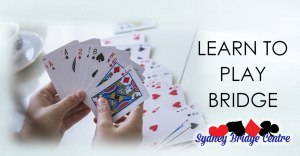City and Canada Bay – Thursday Morning 8th May 2025.

Last week we focused on no-trump bidding and play. This week we’ll look at what some might think of as a fairly boring part-score hand that was nearly always played in 1NT. The bidding wasn’t significant but there was a lot to learn from board 1 about both the play and defence.
There isn’t likely to be much to the auction. North might open 1♣ with a balanced 11 count. As mentioned before, it’s usually an advantage to get your side into the bidding first. Whether he does or doesn’t open East is likely to then bid 1NT – either as an opening or an overcall – and that is likely to be the final contract.
Most declarers made 7 or 8 tricks in 1NT with some making 9 and one even managing 11! Playing imps it wouldn’t really matter much but playing matchpoint pairs it makes a big difference in the score.
The most common lead from South was ♣2. Either because his partner had opened 1♣ or because it was 4th highest from his longest suit. The play at trick 1 will then probably go ♣2 5 Q A (see advanced section for why East will likely win the trick). It’s worth stopping for a moment to consider how much information that trick gives the respective players:
- North – assuming the pair play 4th highest leads, the lead of the ♣2 tell him that his partner has 4 clubs and hence declarer must have 3. (Although if North had opened 1♣ then South might just be leading his partner’s suit from ♣Hxx which would then give declarer 4). He is also likely to know that his partner has a club honour although he doesn’t know exactly which one. This, however, depends on whether a 4th highest lead shows an honour or not – see advanced section for more.
- South – he knows that declarer has the ♣J. How? Because normal convention during play when putting up a high card is to play the lowest of touching honours (i.e. play high but only as high as you need). If North had had ♣QJ he would have played the ♣J. So when he plays ♣Q that means he does NOT have the ♣J. But what South doesn’t know is how many clubs either North or declarer have.
- East – having seen the ♣2 lead, he knows that the defence’s clubs are likely to be breaking 4-4. If the defensive pair are playing a lead style where 4th highest implies an honour, then declarer knows South is likely to have the ♣K (although he might have ♣10 – that again depends on the lead style). Note that declarer is entitled to know the defence’s agreements – if it’s not on their convention card, he can ask what their methods are.
Note how different the information available is to the two defenders. North knows the shape of the club suit but not the honour distribution. South knows the honour distribution but not the shape (North might have ♣Qxx, ♣Qxxx or ♣Qxxxx – he can’t tell). That’s common to every bridge hand – the information available to each player at any point in time is different. One of the arts of being a good defender is appreciating that and trying to help your partner when you know something that they don’t!
Declarer will probably win trick 1. The most likely play then is a diamond to the ♦J losing to ♦K and North will return a club. He should return his original 4th highest – that tells South how many he had. Doing so here will enable the defence to cash 3 more club tricks. But then what? Most likely they will switch to a major. Cashing ♥A would be the defence’s 5th trick but that’s it – Declarer will be able to win and try a 2nd diamond finesse. That will win and allow declarer to score 4 diamonds, 1 club, 2 spades and 1 heart (or if he tries hearts first he will find they are 3-3 so he scores 2 spades, 3 hearts, 1 club and 2 diamonds with the aid of the finesse).
But we can see Deep Finesse says East West can only make 1NT. How can the defence do better? The diamond suit is the key. Observe how few entries there are to the West hand. One improvement would be for North, instead of winning the ♦K, to duck the 1st diamond. Declarer will now score 2 diamond tricks but can’t ever then reach the long cards in the suit. That defence could hold declarer to 2 spades, 2 hearts, 2 diamonds and 1 club. However, declarer can still make 8 tricks as he can give up on diamonds and play on hearts instead. He leads towards his hand, North ducks and the ♥Q wins. Then he can return to dummy with ♦A and lead a 2nd heart up. With hearts splitting 3-3 that will mean he actually scores 2 spades, 3 hearts, 2 diamonds and 1 club (the defence score 3 clubs, ♦K and ♥A).
So what holds declarer to 7 tricks? It’s still the diamond suit. See advanced section for something else the defence could do that’s even better.
Key points to note
When defending and putting up a high card, convention is to play the lower of touching honours (i.e. play high but only as high as you need). Different to if you were leading the suit yourself when you’d normally lead the highest of a sequence.
A lot of information is available to both defenders and declarer based on the cards played to each trick. But that information is frequently different for each of them.
4th highest leads against no-trumps are common – but there’s more to it than that. Does leading 4th imply an honour? Can that honour be the 10? All things experienced pairs should discuss – and things that your opponents are entitled to know since it influences what layouts are possible after the play of the 1st round of the suit.
As declarer sometimes you can leave yourself in a position where it’s safe to lose the lead to one hand but not the other.
Occasionally playing high in 2nd seat can disrupt declarer’s timing – particularly in no-trumps if the hand sitting over you has very few entries.
More advanced
At trick 1, declarer is likely to win ♣A. One reason for this is to leave his club holding protected from at least one side. Leaving himself with ♣Jx means that if South is on lead, the defence cannot run the club suit. Frequently as a declarer you will want to leave yourself with a position like this because you may then be able to safely lose the lead to one defender and not the other. On this particular hand that doesn’t matter so much because you don’t have a choice about where to lose the lead – you are likely to be finessing into the North hand (and if North had opened the bidding you would know he has almost all the values anyway).
The inference available after the ♣2 lead will depend on the pair’s leading methods. Some pairs lead 4th highest regardless of what cards they hold in a long suit. Others lead “4ths and 2nd” – which means 4th highest from a suit containing an honour, but 2nd highest from one that doesn’t contain an honour. This method can be useful to help partner determine the high card layout of a suit. A further subtle matter is what comprises “an honour”? Specifically the 10. Some pairs do treat it as an honour (so from 10xxx they lead 4th) others do not (so from 10xxx they would lead 2nd). That is all information declarer is entitled to know. It’s relevant here because if the pair are playing 4th/2nd and does NOT treat the 10 as an honour then declarer will know South must have the ♣K for his lead. If they DO treat the 10 as an honour then South might have led from ♣10xxx and North could have started with ♣KQxx.
What about the diamond suit? An advanced play that South might consider when declarer leads a diamond towards dummy is to insert the ♦Q! Although in most cases it’s right for 2nd hand to play low see how effective the ♦Q is in this case. It completely ruins declarer’s timing. Whether or not he wins it, he is now limited to 1 diamond trick (better than the 2 we saw earlier if North ducks the ♦J). In fact it could be even worse. If declarer takes the view that South has inserted the ♦Q from an initial holding of ♦KQx then he might duck and try a finesse on the next round hoping to then score 4 diamond tricks. On the actual layout with no further entry to West that would mean declarer scores no diamond tricks at all!
What’s more the ♦Q also means declarer doesn’t then have two entries to dummy to be able to lead hearts up twice. That defence is what holds declarer to 7 tricks – the best he can do is win ♦A, lead a heart up, then duck a spade and with those also splitting 3-3 now he can score 3 spades, 2 hearts, 1 diamond and 1 club (he’ll eventually be able to knock out the ♦K and force the defence to play a heart as that’s all they’ll have left).
Of course it’s easy to show the ♦Q as a “brilliant” defence on this particular layout. Not so easy in the real world when the defender can’t see declarer’s hand. I was actually defending a hand myself with exactly this holding quite recently (in the club suit). But when I tried to be clever and put in the ♣Q I found the original layout was declarer holding ♣Kxxx and all I had done was solve his guess to find the ♣Q (which he had probably been about to get wrong as the odds holding 9 cards in a suit are to play for them 2-2)! As so often happens in bridge my attempted “brilliancy” just ended up with egg on my face! Sometimes of course you can tell from the auction whether it’s possible for declarer to have a holding like that but frequently you can’t.
Julian Foster (many times NSW representative) ♣♦♥♠



